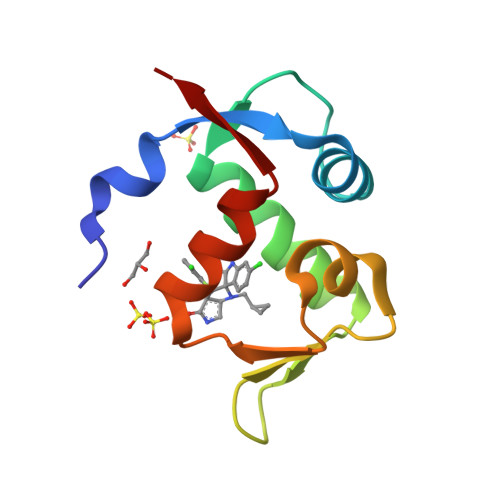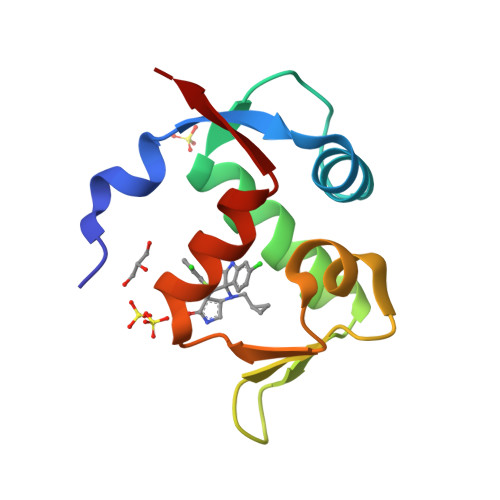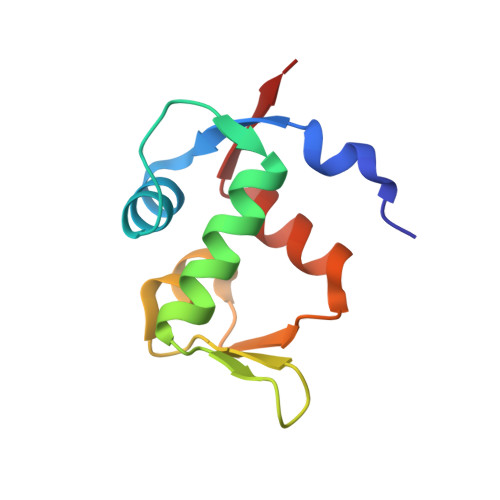Targeted Synthesis of Complex Spiro[3H-indole-3,2'-pyrrolidin]-2(1H)-ones by Intramolecular Cyclization of Azomethine Ylides: Highly Potent MDM2-p53 Inhibitors.
Gollner, A., Weinstabl, H., Fuchs, J.E., Rudolph, D., Garavel, G., Hofbauer, K.S., Karolyi-Oezguer, J., Gmaschitz, G., Hela, W., Kerres, N., Grondal, E., Werni, P., Ramharter, J., Broeker, J., McConnell, D.B.(2019) ChemMedChem 14: 88-93
- PubMed: 30458062
- DOI: https://doi.org/10.1002/cmdc.201800617
- Primary Citation of Related Structures:
6I3S - PubMed Abstract:
Mouse double minute 2 (MDM2) is a main and direct inhibitor of the crucial tumor suppressor p53. Reports from initial clinical trials showed that blocking this interaction with a small-molecule inhibitor can have great value in the treatment of cancer for patients with p53 wild-type tumors; however, it also revealed dose-limiting hematological toxicities and drug-induced resistance as main issues. To overcome the former, an inhibitor with superior potency and pharmacokinetic properties to ultimately achieve full efficacy with less-frequent dosing schedules is required. Toward this aim, we optimized our recently reported spiro-oxindole inhibitors by focusing on the crucial interaction with the amino acid side chain of His96 MDM2 . The designed molecules required the targeted synthesis of structurally complex spiro[indole-3,2'-pyrrolo[2,3-c]pyrrole]-2,4'-diones for which we developed an unprecedented intramolecular azomethine ylide cycloaddition and investigated the results by computational methods. One of the new compounds showed superior cellular potency over previously reported BI-0252. This finding is a significant step toward an inhibitor suitable to potentially mitigate hematological on-target adverse effects.
Organizational Affiliation:
Boehringer Ingelheim RCV GmbH & Co. KG, Dr. Boehringer-Gasse 5-11A, 1121, Vienna, Austria.



















